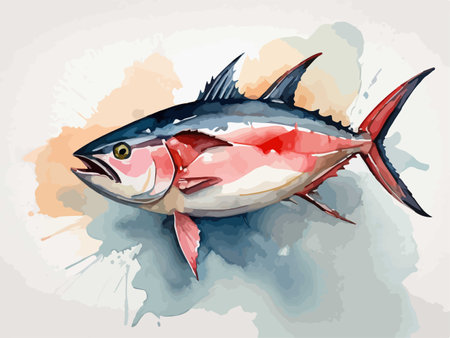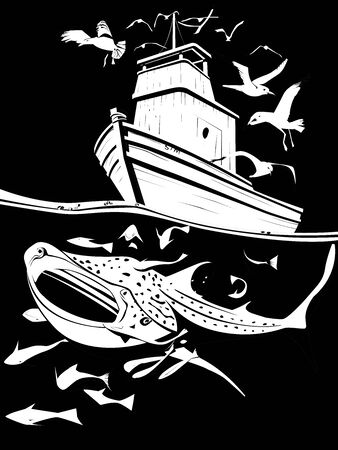1. Introduction: Where Serenity Meets the Sea
Step into the tranquil world of the Andaman-Nicobar Islands, a breathtaking paradise where time seems to slow down and every moment is cradled by the gentle embrace of nature. Here, the salty breeze carries whispers of adventure, and the soothing rhythm of waves lulls you into a state of calm far removed from city chaos. For Indian nature lovers yearning for an escape, these emerald islands are more than just a destination—they are a soulful retreat. Imagine waking up to the sound of the ocean, your toes curling into soft sands as you gaze at endless turquoise waters. Whether you seek a peaceful sea camping experience beneath starlit skies or dream of casting your fishing line into crystal-clear lagoons teeming with life, the Andaman-Nicobar Islands offer an unmatched haven. This is where serenity truly meets the sea, inviting you to slow down, reconnect with yourself, and surrender to the rhythm of island living.
2. The Andaman-Nicobar Experience: Local Flavours & Customs
When you set foot on the sun-drenched shores of the Andaman-Nicobar Islands, you’re not just stepping into a tropical paradise—you’re entering a world where cultures blend as smoothly as coconut milk in fresh fish curry. For every Bharatiya traveller who wants to feel at home yet discover something new, these islands offer a unique rhythm of life rooted in tradition and warm community vibes.
Start your journey by mingling with local fishermen at the jetty early morning. These humble sea-folk are more than happy to share tales of their father’s and grandfather’s ocean adventures, passing on wisdom about the tides, fish migration, and their deep bond with nature. Many will invite you to join them for a session of community fishing, where everyone—men, women, even kids—work together using age-old techniques like “Khalasi” (rope fishing) or bamboo traps. It’s less about the catch and more about the laughter, chai breaks, and shared joy under the open sky.
No true Andaman experience is complete without indulging your taste buds. Picture yourself sitting on a palm-fringed beach, sampling today’s freshest catch—maybe tangy machhli tikka, spicy crab masala, or coconut-infused fish moilee. The best part? Most meals are cooked over an open fire right on the sand, giving everything that unmistakable smoky aroma only islanders know how to create. Here’s a quick peek at some must-try desi seafood dishes:
| Dish | Main Ingredients | Local Touch |
|---|---|---|
| Fish Moilee | White fish, coconut milk, curry leaves | Cooked over firewood for earthy flavour |
| Prawn Curry | Prawns, mustard seeds, fresh turmeric | Served with red rice straight from island farms |
| Mud Crab Masala | Mud crab, black pepper, green chillies | Caught fresh by hand at low tide! |
| Bamboo Grilled Fish | Catch of the day, lemon grass, spices | Wrapped in banana leaf before grilling |
The islanders cherish eco-friendly camping too—think tents made from sustainable materials, reusable utensils, and “zero trace” bonfires. You’ll learn how to leave nothing but footprints behind and maybe even join a beach clean-up with local youth groups. This way of living feels deeply connected to both Mother Earth and ancient Indian values—making it perfect for anyone seeking soulful travel beyond ordinary sightseeing.

3. Sea Camping: Sleeping Under the Starlit Sky
Imagine this, yaar—setting up your own cozy tent right on a powdery Andaman beach, with nothing but the salty breeze and coconut palms for company. Sea camping here is not just about pitching a tent; it’s about becoming one with the gentle rhythm of island life. With every wave whispering secrets from across the Bay of Bengal, you’ll find yourself lulled into a peaceful slumber, far away from the city’s never-ending honking and rush.
How to Set Up Your Beachside Paradise
First things first—choose a spot that’s slightly above the high-tide mark. Trust me, you don’t want the ocean joining you in your tent at midnight! Lay down your mat or sleeping bag, string up some fairy lights (solar ones are best), and maybe set a couple of bamboo torches for that proper desi jungle camp vibe. Many local vendors in Havelock or Neil Island can help you rent tents and gear, so no need to lug everything from home.
Lullabies of the Ocean
As darkness falls, let the sounds of waves be your background music—the ultimate playlist curated by Mother Nature herself. Crickets chirp their own tune while palm leaves rustle overhead. If you’re lucky, you might even spot tiny bioluminescent plankton twinkling like fireflies in the surf. This is the kind of night that melts away all your worries, as if every breath brings you closer to the real essence of “chill maaro.”
Waking Up to Island Magic
There’s nothing quite like unzipping your tent at dawn and being greeted by a canvas of pastel skies over turquoise waters. The sun rises early here, painting everything golden—perfect for those Insta-worthy shots (with #AndamanVibes, of course). Brew some chai over a portable stove or enjoy fresh coconuts offered by friendly locals passing by. With each sunrise, you’ll realise why sea camping in Andamans isn’t just an activity—it’s a soulful experience meant for true nature lovers who know how to slow down and savour every moment.
4. Fishing Adventures: Channelling the Island Angler
When you set foot on the sun-kissed shores of the Andaman-Nicobar Islands, it’s hard not to feel the tug of the sea calling you for a true fishing adventure. Whether you are a seasoned angler with countless tales or a curious first-timer ready to try your luck, these islands offer an experience that blends tradition, thrill, and pure island joy. The rhythm of the waves pairs beautifully with the patient art of fishing, making it more than just a pastime—it’s a celebration of local life.
Traditional Techniques: Learning from Island Wisdom
The Andamanese have fished these turquoise waters for generations, using age-old techniques passed down like family heirlooms. Cast nets (locally called ‘jala’), hand lines, and bamboo rods are common sights along the coast. Many camps offer friendly guides who teach you to bait hooks with fresh prawns or squid, sharing tips in a blend of Hindi, Tamil, and even Bengali—true symbols of India’s unity in diversity.
Island Boat Rides: Journeying Like a Local
No fishing adventure is complete without hopping onto a wooden ‘dingi’ or motorised boat for an early morning ride. As you drift past mangroves and coral reefs, dolphins sometimes play in your wake while sea eagles circle above. For many locals, these journeys aren’t just about catching fish—they’re about connecting with the sea and each other over steaming cups of chai and light-hearted banter.
Fishing Experiences: What Awaits You
| Experience | Local Touch | Best Time |
|---|---|---|
| Hand Line Fishing | Try your skill with simple gear alongside village elders | Early Morning |
| Night Fishing | Use lanterns to attract fish; listen to island stories under the stars | Dusk till Midnight |
| Boat Trawling | Join fishermen as they sing folk songs and haul in their catch | Midday to Sunset |
The thrill comes when you finally feel that tug on your line—a wriggling snapper or maybe even a prized barracuda! There’s nothing quite like grilling your fresh catch over a beach bonfire, seasoning it with local spices and enjoying it with new friends as waves lap nearby. Here, fishing isn’t just a sport; it’s woven into the island’s slow pace and easy camaraderie—an invitation to live life one cast at a time.
5. Responsible Travel: Respecting Nature, Embracing Sustainability
If you are setting sail for the Andaman-Nicobar Islands, your journey is more than just an escape — it’s a gentle promise to Mother Earth. The turquoise waters and untouched beaches invite us to slow down and tune in with nature, but as responsible travellers, our footprints should be light, our memories rich.
Sustainable Camping: Leave No Trace Behind
Whether you are pitching your tent on a secluded shore or under the shade of coconut trees, remember the golden rule: “Take only memories, leave only footprints.” In India, the concept of safai abhiyan (cleanliness drive) has caught on even among campers. Carry reusable water bottles, avoid single-use plastics, and always pack up all waste. Local guides will remind you to keep your camping spot cleaner than you found it — a simple act that shows respect for both land and community.
Eco-friendly Fishing: Harmony with Marine Life
Fishing in the Andamans is not just about catching; it’s about connecting. Traditional fishing techniques used by indigenous Nicobarese communities teach us patience and respect for marine ecosystems. Practice catch-and-release where possible, use non-toxic tackle, and steer clear of restricted zones to protect coral reefs and turtle nesting sites. If you’re lucky enough to join a local fisherman for the day, observe how they chant prayers before casting their nets — a humble reminder that every fish belongs to a greater story.
Supporting Conscious Travel Movements in India
The spirit of conscious travel is blooming across India, from Himalayan homestays to beachside eco-camps. Join hands with groups like Responsible Tourism Society of India or follow hashtags like #VocalForLocal to find sustainable operators in the Andamans. Choose experiences that empower local communities and invest back into conservation efforts. Every rupee spent thoughtfully is a ripple toward preserving paradise.
By embracing sustainable camping and fishing practices in these magical islands, you become part of a new wave of Indian travellers — those who cherish adventure without compromise, who celebrate nature while protecting her delicate balance. So go ahead, let the sea breeze fill your lungs and your heart. Just remember: when you return home, let there be nothing left behind but stories worth sharing.
6. Essential Tips & Local Jugaad
Packing the Indian Way: Less is More, But Don’t Forget Chai!
When you’re getting ready for a sea camping and fishing escapade in the Andaman-Nicobar Islands, keep your bags light and your heart lighter. Pack breathable cotton clothes (think kurta-pajama or salwar-kameez for ultimate comfort), a sturdy pair of chappals, and don’t forget a gamcha or stole—it’s your towel, sun-shield, and picnic mat all rolled into one. Of course, carry your own stash of masala chai packets or instant filter coffee; nothing beats sipping hot tea by the sea as the sun rises over blue waters.
Monsoon Surprises: Embrace the Unexpected
The islands come alive during monsoon—lush greens, peacocks dancing, and sudden drizzles that add magic to your evenings. Always pack a lightweight raincoat and waterproof covers for your electronics. Local jugaad? Carry a large plastic sheet (polythene) from any Indian market; it doubles up as a tent cover or an impromptu picnic shelter when the clouds burst unexpectedly.
Spicy Food & Island Hospitality
Andaman cuisine is fragrant with coconut, mustard seeds, and the zing of fresh catch. If you aren’t used to spicy food, ask for “kam mirchi” (less chili) when ordering at local shacks. Islanders are warm-hearted—if someone offers you homemade fish curry or fresh toddy, say yes! A little Hindi or Tamil goes a long way (“Namaste!” or “Vanakkam!”). Accepting hospitality is part of the adventure, but remember to respect local customs—remove shoes before entering homes and always greet elders politely.
Stay Safe & Memorable
Keep a small first-aid kit handy—basic meds, band-aids, mosquito repellent (odomos cream is a desi favourite), and some Dettol. Inform your family about your whereabouts; sometimes mobile networks can be moody like the monsoon. Above all, treat the islands gently: avoid single-use plastics, don’t disturb nesting turtles, and leave only footprints behind. With these local hacks and a pinch of desi jugaad, your Andaman adventure will be smooth sailing—full of laughter, stories to tell, and memories that linger like the aftertaste of spiced chai by the shore.


